
Quercus petraea, commonly known as the sessile oak, Cornish oak, Irish Oak or durmast oak, is a species of oak tree native to most of Europe and into Anatolia and Iran. The sessile oak is the national tree of Ireland, and an unofficial emblem in Wales and Cornwall.
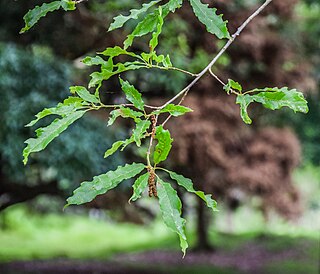
Quercus lancifolia is a species of oak found in Central America and Mexico.
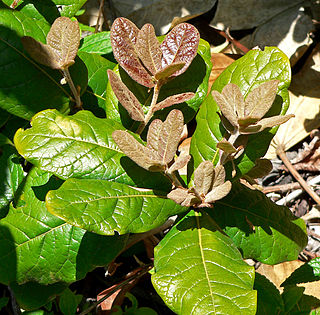
Quercus costaricensis is a species of oak native to Central America. It is often found with Quercus copeyensis in the upper montane forests, to 3,100 metres elevation. The leaves are tough and leathery with a short petiole and toothed margin. Wind is the primary pollinator. Squirrels are their main seed predator but also their main disperser as they commonly lose their buried seeds.

The Talamancan montane forests ecoregion, in the tropical moist broadleaf forest biome, are in montane Costa Rica and western Panama in Central America.
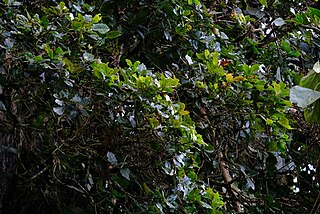
Quercus copeyensis is a species of oak endemic to the Talamancan montane forests of Costa Rica and Panama. It is commonly called Panamanian oak.

Van Gelder's bat or Van Gelder's big-eared bat is a species of vesper bat in the family Vespertilionidae. It is found in Belize, Costa Rica, Honduras, and Mexico. The species is monotypic within its genus. It is part of the tribe Antrozoini within the subfamily Vespertilioninae and is related to the pallid bat. The bat is found in forest habitat from sea level to elevations as high as 2300 m, although not usually above 1300 m, and is insectivorous and crepuscular. It apparently has a fragmented distribution, and is threatened by deforestation.
Guatteria tonduzii is a species of plant in the Annonaceae family. It is found in Colombia, Costa Rica, and Panama. It is threatened by habitat loss.

Quercus benthamii is a species of oak in the family Fagaceae. It is native to the cloud forests of Central America and southern Mexico. It is threatened by habitat loss.
Quercus brenesii is a species of plant in the family Fagaceae. It is endemic to Costa Rica. It is placed in section Lobatae.
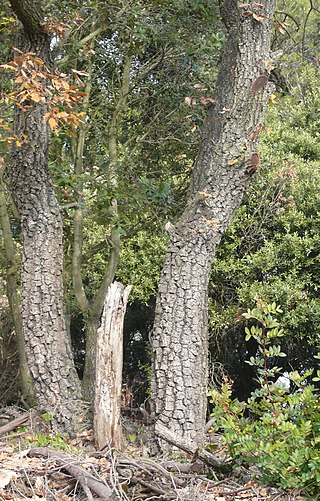
Quercus × cerrioides is a hybrid oak species in the family Fagaceae. The tree is endemic to Spain. It is a conservation dependent plant threatened by habitat loss. Its parent are Q. canariensis and Q. pubescens subsp. subpyrenaica. Both parents are placed in section Quercus.
Quercus gulielmi-treleasei is a species of plant in the family Fagaceae. It is found in Costa Rica and Panama. It is placed in section Lobatae.

Cedrela tonduzii is a monoecious tree that grows up to 40 m and can reach a diameter at breast height of up to 180 cm, but generally averages 80 cm.
Adolphe Tonduz (1862-1921) was a Swiss botanist who collected plants in both Guatemala and Costa Rica. He was the first director of the National Herbarium of Costa Rica, which was founded in 1887. Together with Henri Pittier he published 'Primitae Florae Costaricensis' and 'Herborisations au Costa Rica'.

Quercus lusitanica, commonly known as gall oak, Lusitanian oak, or dyer's oak, is a species of oak native to Portugal, Spain and Morocco. Quercus lusitanica is the source of commercial nutgalls. These galls are produced by the infection from the insect Cynips gallae tinctoriae. They are used for dyeing.
Ronnbergia tonduzii is a species of flowering plant in the family Bromeliaceae, native to Colombia, Costa Rica, Ecuador and Panama. It was first described in 1903 as Aechmea tonduzii.
Quercus oleoides, with Spanish common names encina or encino, is a Mesoamerican species of oak in the southern live oaks section of the genus Quercus. It grows in dry forests and pastureland of eastern and southern Mexico and much of Central America, from Guanacaste Province in Costa Rica north as far as the State of Tamaulipas in northeastern Mexico.

Quercus insignis is a Mesoamerican species of oak in the white oak section, within the beech family. It is native to southern Mexico and Central America, from Veracruz to Panamá.
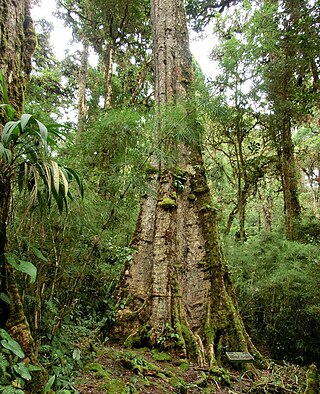
Quercus sapotifolia is a species of oak. It is native to southern and western Mexico as well as Central America. It is threatened by habitat loss.

Sciodaphyllum pittieri is a species of flowering plant in genus Sciodaphyllum. It is native to the mountain forests of Costa Rica and western Panama.














